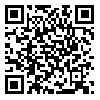Thu, Dec 25, 2025
Volume 14, Issue 2 (8-2025)
2025, 14(2): 12-22 |
Back to browse issues page
Download citation:
BibTeX | RIS | EndNote | Medlars | ProCite | Reference Manager | RefWorks
Send citation to:



BibTeX | RIS | EndNote | Medlars | ProCite | Reference Manager | RefWorks
Send citation to:
Vafaeian S, Hajibagheri P. Recent Advances in Deep-Learning for Dental Imaging (2022–2025): A Narrative Review. Journal title 2025; 14 (2) :12-22
URL: http://3dj.gums.ac.ir/article-1-646-en.html
URL: http://3dj.gums.ac.ir/article-1-646-en.html
1- Dental Sciences Research Center, Department of Oral and Maxillofacial Medicine, School of Dentistry, Guilan University of Medical Sciences, Rasht, Iran , soheylvafa@gmail.com
2- Dental Sciences Research Center, Department of Oral and Maxillofacial Medicine, School of Dentistry, Guilan University of Medical Sciences, Rasht, Iran
2- Dental Sciences Research Center, Department of Oral and Maxillofacial Medicine, School of Dentistry, Guilan University of Medical Sciences, Rasht, Iran
Abstract: (527 Views)
This narrative review synthesises 2022–2025 evidence on deep learning for dental imaging, focusing on diagnostic accuracy (precision, recall, F1), segmentation quality (Dice), and reporting of inference speed. Representative model families are also situated—YOLO one-stage detectors, attention-augmented U-Nets, 3-D CNNs, and Segment Anything Model–derived hybrids (“SAM-derived” = architectures adapted from Segment Anything for dental images)—within current clinical workflows. From database searches of PubMed, Scopus and IEEE Xplore (January 2022 – May 2025), 342 records were retrieved; after deduplication and screening, 17 primary studies were included. Detection/classification studies (n = 10) reported overall F1 values up to 0.97 (highest in peri-implantitis detection; internal test; n = 100 from an 800-image dataset); the lowest externally evaluated detector reported ~0.53 F1 on CBCT periapicals (external site; n = 195 scans). YOLOv8 achieved F1 ≈ 0.82 on bitewings in an internal test split (n = 150). Segmentation studies (n = 8) reported Dice ~0.49–0.98: Attention U-Net reached 0.963 for single-tooth CBCT on an internal test (n = 9 scans). A multi-structure Swin-UNETR reported Dice 0.936–0.965 for tooth/sinus/bone/canal on an external set (n = 55 scans). A SAM-derived model (Tooth-ASAM) achieved 0.909–0.975 Dice across mixed public/private datasets. While three studies included external-site validation, none were prospective or randomised. Key priorities for clinical translation were identified: consistent speed reporting (batch-1 latency/FPS on named hardware), metric harmonisation (Dice for segmentation; F1 at IoU = 0.5 for detection), dockerised inference pipelines, and multi-centre external testing followed by prospective trials to quantify clinical impact.
Type of Study: Review article |
Subject:
Radiology
Received: 2025/07/6 | Accepted: 2025/08/21 | Published: 2025/08/10
Received: 2025/07/6 | Accepted: 2025/08/21 | Published: 2025/08/10
Send email to the article author
| Rights and permissions | |
 | This work is licensed under a Creative Commons Attribution-NonCommercial 4.0 International License. |





